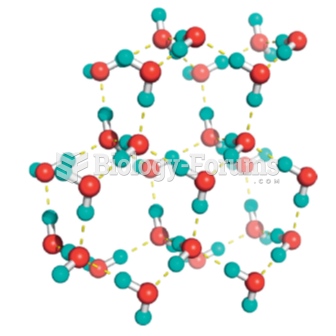|
|
|
Asthma attacks and symptoms usually get started by specific triggers (such as viruses, allergies, gases, and air particles). You should talk to your doctor about these triggers and find ways to avoid or get rid of them.
To maintain good kidney function, you should drink at least 3 quarts of water daily. Water dilutes urine and helps prevent concentrations of salts and minerals that can lead to kidney stone formation. Chronic dehydration is a major contributor to the development of kidney stones.
There are more sensory neurons in the tongue than in any other part of the body.
People with high total cholesterol have about two times the risk for heart disease as people with ideal levels.
Aspirin is the most widely used drug in the world. It has even been recognized as such by the Guinness Book of World Records.







